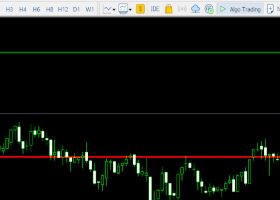
The Case For The Divergence Trade Strengthens - Goldman Sachs
In the early post-crisis years, a wide variety of monetary policy models—including different versions of the Taylor rule and the “optimal control” approach popularized by then-Vice Chair Janet Yellen—signaled that Fed officials would need to keep US monetary policy extremely easy for much longer than generally expected.
Now, those same models suggest that rates will need to rise significantly more than currently discounted in the bond market.
Copy signals, Trade and Earn $ on Forex4you - https://www.share4you.com/en/?affid=0fd9105
Similar models currently suggest that the European Central Bank and the Bank of Japan may need to go beyond the easing steps taken to date, as core inflation is still well below the target and—at least in the case of Europe—unemployment is still very high. This message is strongest using an optimal control approach but it comes through even under more conventional Taylor rules.
The conclusion that the economic fundamentals point to tighter policy in the US and easier policy in Europe and Japan strengthens further once we consider financial conditions.
The US economy has sustained above-trend job growth in recent quarters despite an estimated negative “FCI impulse” on GDP growth of more than 1 percentage point. The recent FCI easing implies that this drag will end soon, which points to a pickup in growth at a time when the economy is closing in on full employment.
In contrast, the FCI impulse in the Euro area and Japan is turning more negative on the back of the recent currency appreciation. This strengthens the conclusion from our Taylor rule/optimal control analysis that central banks in these economies may need to ease policy further, starting perhaps as early as next week in the case of the BoJ.
![[$9,496] in 5 Days Using 'Supply Demand EA ProBot' (Live Results) [$9,496] in 5 Days Using 'Supply Demand EA ProBot' (Live Results)](https://c.mql5.com/6/965/splash-preview-761070-1740062258.png)

